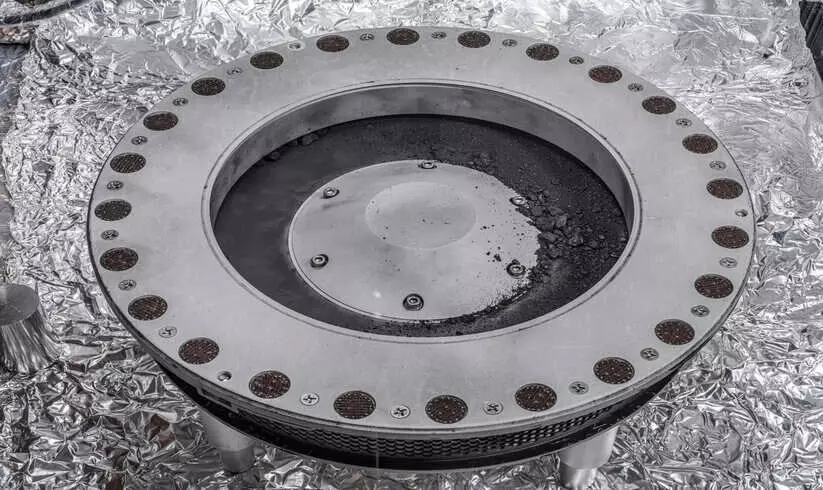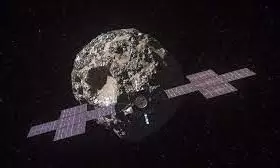
Asteroid Bennu sample rich in carbon, water: NASA
text_fieldsA view of the outside of the OSIRIS-REx sample collector
Washington: Initial studies of the 4.5-billion-year-old asteroid Bennu rock sample have revealed that it has high-carbon content and water, signalling the building blocks of life.
The 8.8-ounce rocky material collected from asteroid Bennu in 2020 was brought to Earth by NASA’s OSIRIS-REx (Origins, Spectral Interpretation, Resource Identification, and Security-Regolith Explorer) in late September this year.
The sample was showcased by NASA on Wednesday from its Johnson Space Center in Houston for the first time since it landed.
In a statement, NASA Administrator Bill Nelson said, “The sample will help scientists investigate the origins of life on our own planet for generations to come”.
“As we peer into the ancient secrets preserved within the dust and rocks of asteroid Bennu, we are unlocking a time capsule that offers us profound insights into the origins of our solar system,” said Dante Lauretta, OSIRIS-REx principal investigator, University of Arizona, Tucson.
The goal of the OSIRIS-REx sample collection was 60 grams of asteroid material. Curation experts at NASA Johnson, working in new clean rooms built especially for the mission, have spent 10 days so far carefully disassembling the sample return hardware to obtain a glimpse at the bulk sample within.
When the science canister lid was first opened, scientists discovered bonus asteroid material covering the outside of the collector head, canister lid, and base. There was so much extra material it slowed down the careful process of collecting and containing the primary sample.
Scientists performed a "quick-look" analysis of that initial material within the first two weeks, collecting images from a scanning electron microscope, infrared measurements, X-ray diffraction, and chemical element analysis.
X-ray computed tomography was also used to produce a 3D computer model of one of the particles, highlighting its diverse interior. This early glimpse provided evidence of abundant carbon and water in the sample.
“The bounty of carbon-rich material and the abundant presence of water-bearing clay minerals are just the tip of the cosmic iceberg. With each revelation from Bennu, we draw closer to unravelling the mysteries of our cosmic heritage,” Lauretta said.
In the coming two years, the mission’s science team will continue characterising the samples and conduct the analysis needed to meet the mission’s science goals.
NASA will preserve at least 70 percent of the sample at Johnson for further research by scientists worldwide, including future generations of scientists.
As part of OSIRIS-REx’s science program, a cohort of more than 200 scientists around the world will explore the regolith’s properties, including researchers from many US institutions, NASA partners JAXA (Japan Aerospace Exploration Agency), CSA (Canadian Space Agency), and other scientists from around the world.
With inputs from IANS


























